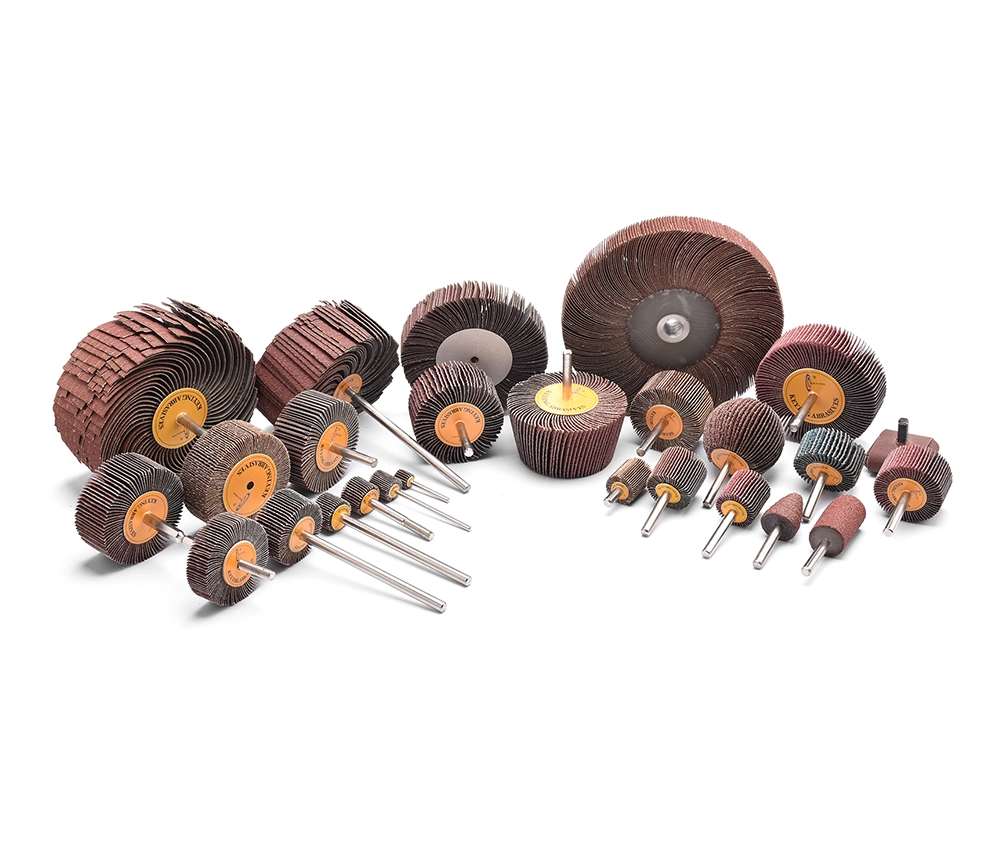
Dec 20-2017
A grinding wheel, also known as a bonded abrasive or sanding flap wheel for drill, is a type of bonded abrasive tool made by bonding ordinary abrasives with a binder into a certain shape (mostly circular with a center hole) and having a certain strength. It is generally composed of abrasives, binders, and pores, which are commonly referred to as the three elements of bonded abrasives. Common types of grinding wheels include ceramic (binder) grinding wheels, resin (binder) grinding wheels, and rubber (binder) grinding wheels. Among them, the drill grinding wheel is the most widely used and has the largest amount of usage in abrasive tools. When buy abrasives and use, it rotates at high speed and can perform rough grinding, semi-precision grinding, precision grinding, slotting, and cutting on the outer circle, inner circle, plane, and various shapes of metal or non-metal workpieces.
A grinding wheel is a bonded abrasive tool with a central through-hole made of abrasives and binders. The characteristics of grinding wheels are determined by factors such as abrasives, particle size, hardness, binder, shape, and size, which are introduced below.
1. Selection of abrasives
Abrasive is the main raw material for manufacturing drill grinding wheels and is responsible for cutting work. Therefore, abrasives must be sharp, have high hardness, good heat resistance, and a certain toughness.
2. Particle size and its selection
It refers to the size of abrasives china particles. Particle size is divided into abrasive grains and micro-powders. For abrasives with a particle size larger than 40μm, they are called abrasive grains. The particle size number is represented by the number of holes per inch on the sieve that the abrasive grain can pass through. For abrasives with a particle size smaller than 40μm, they are called micro-powders. The particle size number is represented by W and the number following it represents the actual size of the micro-powder.
According to the abrasives used, grinding wheels can be divided into ordinary abrasives (such as alumina and silicon carbide) grinding wheels, natural abrasives, and superhard abrasives (such as diamond and cubic boron nitride) grinding wheels; according to the shape, they can be divided into flat grinding wheels, beveled grinding wheels, cylindrical grinding wheels, cup-shaped grinding wheels, disc-shaped grinding wheels, etc.; according to the binder, they can be divided into ceramic grinding wheels, resin grinding wheels, rubber grinding wheels, metal grinding wheels, etc. The characteristic parameters of grinding wheels mainly include abrasives, particle size, hardness, binder, shape, size, etc. Since the sanding flap disc grinding wheel for drill usually works at high speeds, they should be subjected to rotation tests and static balance tests before use. After working for a period of time, grinding wheels should be repaired to restore their grinding performance and correct geometric shape.
1. Grinding wheels are fragile items and must be handled with care to prevent vibration cracking and damage during handling.
2. Grinding wheels should be stored on shelves or in boxes to prevent moisture.
3. Resin-bonded grinding wheels should not come into contact with alkaline substances. After storage for more than one year, they must undergo a rotation strength test, and only those that pass the test can be used.
1. The diameter of the chuck for the drilling grinding wheel shall not be less than one-third of the diameter of the installed grinding wheel. For the cutting grinding wheel, the diameter of the chuck shall not be less than one-fourth of the diameter of the installed grinding wheel.
2. For any form of grinding wheel chuck, the diameters of both the left and right parts and the radial width of the clamping surface must be equal.
3. The surfaces of the grinding wheel chuck should be smooth and without sharp edges, and well balanced.
4. All rotating parts on the grinding machine, such as the grinding wheel, motor, belt pulley, and workpiece headstock, must be equipped with protective covers. The protective cover should be firm, and its connection strength should not be lower than the strength of the protective cover.